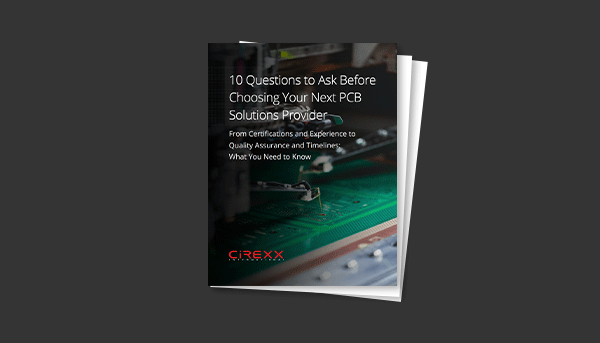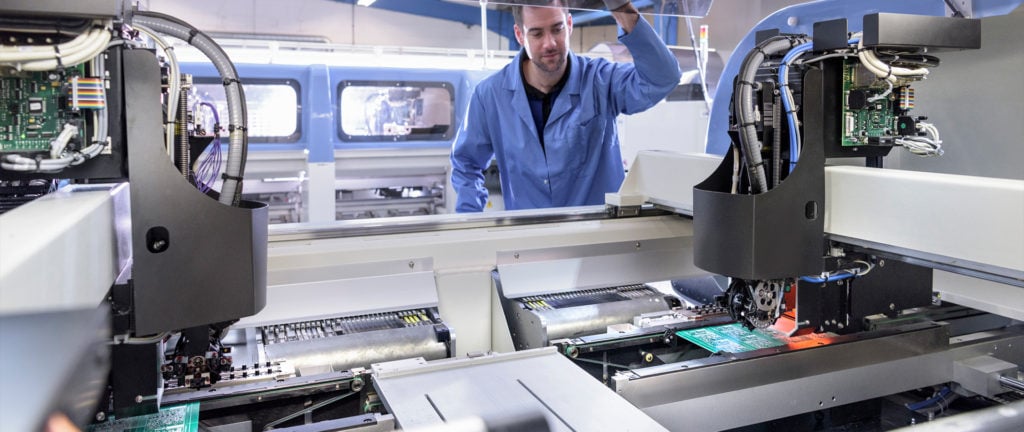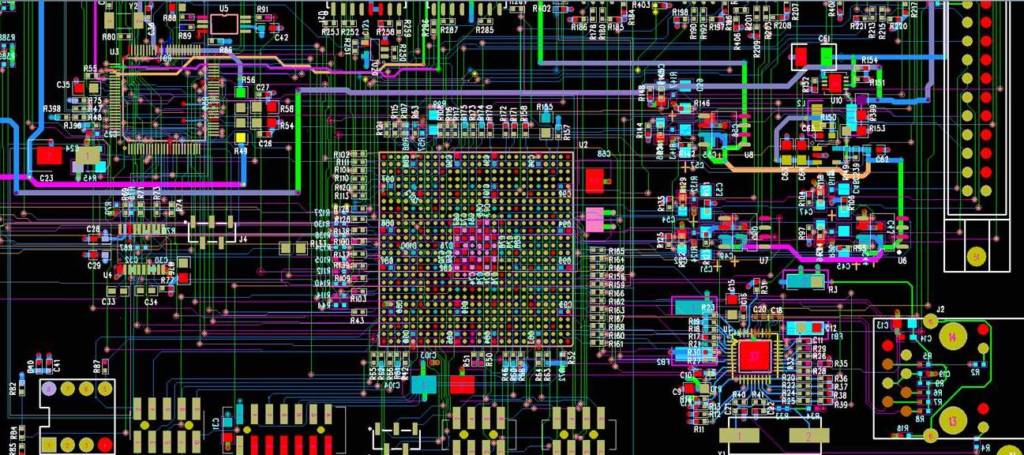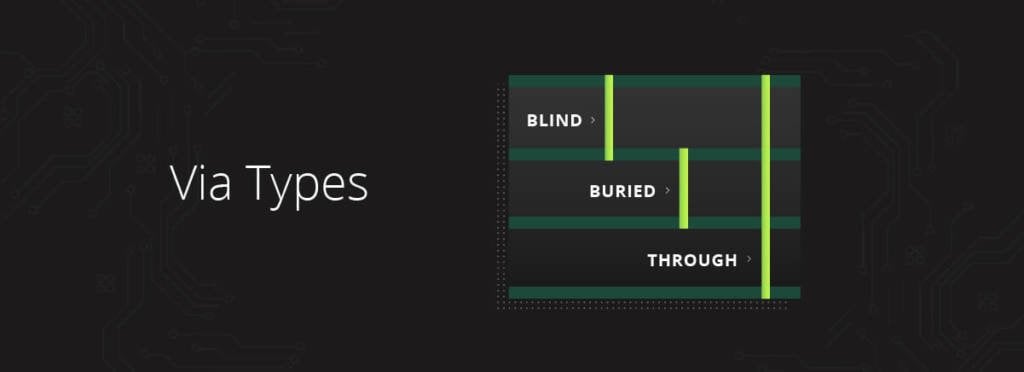PCB Material Types Explained [Your Guide]
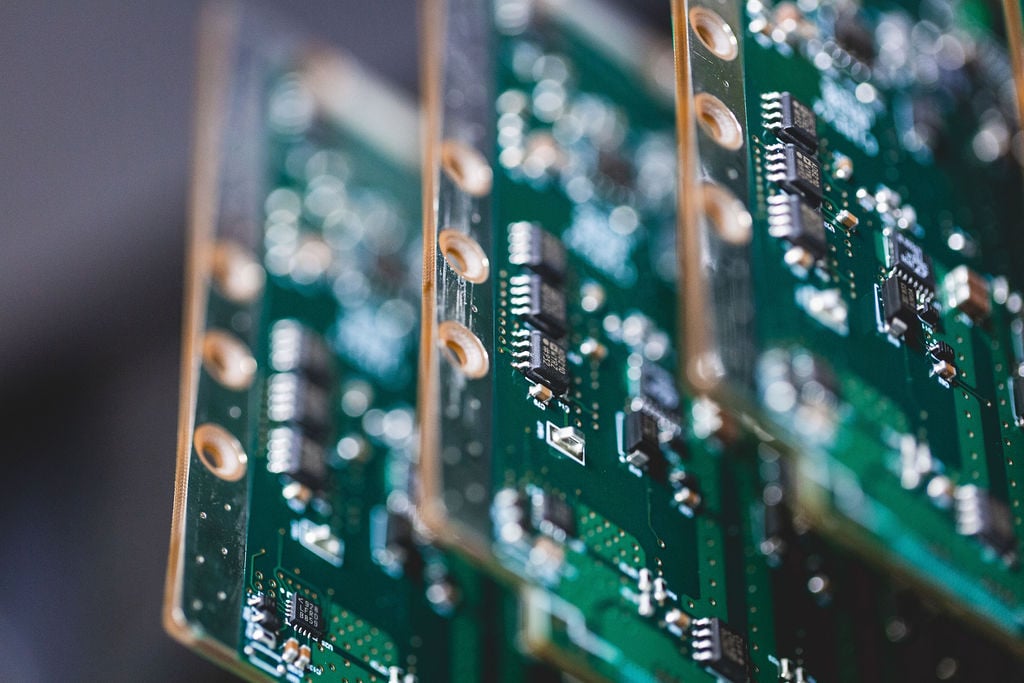
In today’s world of advanced electronics, cutting-edge technology, miniaturization, and ever-increasing signal speed, choosing the right type of printed circuit board material is incredibly important.
There are a variety of materials to choose from to support your design performance requirements, starting at the bottom with FR-4, through a wide array of high speed materials between FR-4 and Teflon.
Printed circuit boards are only as good as the materials they’re made from, which means the right high-quality materials will result in a circuit board that not only works properly, but also lasts for the expected lifespan of the product.
Select the incorrect materials and, simply put, your PCB — and the product in which it lives — may not work as designed.
In our comprehensive guide, discover the most common types of materials and key considerations you shouldn’t forget when making selections for your next project.
Basic PCB Construction
The Most Common type of Materials Used for PCB Fabrication
Key Considerations When Choosing PCB Materials
Basic PCB Construction
Circuit board and flex materials are selected around electrical and environmental properties required to operate based on the schematic. The schematic dictates the number of layers and the form factor of the board. Typically, a board supplier will provide a stackup of the selected materials based on your design. This could be a number of layers — not just 4.
Substrate: This refers to the supporting material used in a PCB that holds the components and traces.
Copper: This highly conductive element is used to make the signal traces that conduct electricity.
Solder mask: This is a technique in which all parts of a circuit board are coated with epoxy except the contacts to be soldered, the gold-plated terminals of any card-edge connectors, and fiducial marks.
Silkscreen: The ink is digitally printed and doesn’t impact the function of a PCB, but it’s an equally important part of a PCB’s construction. Also known as a “silkscreen legend,” this refers to the decals and reference designators in epoxy ink printed on a PCB. A silkscreen will help you recognize warning symbols and identify components and where they are to be placed. A silkscreen will also identify test points and manufacturer marks and more. The ink is typically white, and black may also be used at times when the substrate is white in color.
Here are some technical terms you may come across when it comes to PCB construction:
- Annular ring — The copper ring surrounding the holes on a printed circuit board
- Design rule check — A prescribed process of double-checking a PCB for manufacturability
- Blind and buried vias — A method of layer to layer connections in a printed wiring board that is used to route a trace vertically in the board from one layer to another without a plated through hole
- Trace — Trace is the copper structure that the signals go through; it is commonly referred to as a wire, although it isn’t. It’s the same purpose as a stand alone wire except it is laminated to the substrate and formed by imagine process and etching process.
- Surface mount — Where components are placed by SMT automated equipment and soldered to the board in a conveyorized reflow oven
- Plated-through hole — A drilled hole in the PCB with copper plating added after it is drilled
The Most Common Types of Materials Used for PCB Fabrication
Material selection and integration is a crucial component of PCB fabrication. While there are hundreds of different types of materials you can choose based on cost and technical requirements, here are some of the most common types of materials:
FR4
This material is a National Electrical Manufacturers Association (NEMA) grade of flame retardant laminate that contains an underlying layer of woven-glass fabric and resin binder of epoxy. FR4 has been around for at least 50 years and has evolved, with continuous operating temperatures now up to 180°C. FR4 doesn’t, however, have the best coefficient of thermal expansion (CTE) and electrical characteristics for high-quality signal speed, which is why the material is being used less frequently in PCB fabrication.
MEGTRON, Isola, and non-Teflon Rogers products
Designed to operate in digital products that have higher signal speed and higher signal integrity requirement and must withstand higher temperature ranges. There are different resin systems that fall in between FR4 and Teflon that are also used as signal speeds increase.
PTFE (Teflon)
This material is often used in radar applications and for any type of high-speed communications, such as satellite dishes. It can also better withstand the environment than FR4 and other resin materials.
Metal
Copper is the main conductive metal used in the construction of PCBs.
Key Considerations When Choosing PCB Materials
Design/purpose of the circuit board
It’s important to start with a prototype and consider overall design elements, what the board will be used for, followed by signal integrity requirement, and how it should function in varying environments. Does it need to withstand high temperatures? Do you need a flexible or rigid board?
Heat transfer/conductivity/power thresholds
With the high-speed signals today, overheating is a reality in a wide variety of products, especially those that have a built-in cameras such as cell phones and laptops.
Stackup
The stackup plays a role in how the mechanical engineer can design and fit the PCB into the device. Is it a single layer or multi-layer? This is the first part of the design process and also refers to the impedance requirements.
Mechanical strength
It’s important to consider whether the materials are electrically strong and mechanically strong. In addition, CTE is critical in microelectronics. Will the materials hold up the PCB’s function?
Electrical signal integrity
This is based on the function of your board and whether it’s categorized as one of the following PCB types: high frequency, high power, high density, or microwave.
Component location
The integrity of the signal can be jeopardized if it flows past certain components that generate “noise” — otherwise known as an interference.
Flexibility
If a multi-layer circuit board is constructed with both flexible and rigid materials, it’s referred to as a rigid-flex board. A rigid-flex board is a 3D interconnect that can be bent and folded into almost any shape. A flexible circuit is just as the name implies; it’s made from thin, flexible material.
Cost of materials (including gold)
The cost of materials typically increases when the printed circuit board contains gold, blind or buried vias, or via filling. This is because an alternate process is needed for fabrication. Line and width spacing below 6 mils may also increase the cost. An ENIG surface finish layer is one of the best ways to protect the surface of a printed circuit board.
Consult the Experts When Designing Your PCB
Choosing the wrong materials can seriously delay your PCB project or impact your budget, which is why it’s important to consult experienced professionals from the start. Here at Cirexx, our highly skilled engineers work with clients from the beginning of any project to provide recommendations on materials, stackups, and design for manufacturability.
Our expertise regarding advanced material types and combinations allows us to offer our customers a cost-effective solution for almost any design challenge. You can find the complete list of what we work with on our materials page, but here is just a sample:
- Arlon: High-performance polyimide laminate and prepreg materials
- Dupont: The broadest array of electronic materials for flexible and rigid-flex circuits
- Megtron: Low DK with better stability than PTFEs
- Isola: High speed Copper-clad laminates and dielectric prepegs
- Rogers: Enabling step changes in high-frequency, high-speed performance for wired and wireless communications
Cirexx has the industry-leading procedures, facilities, and team to fulfill all of your custom PCB manufacturing needs. We invite you to contact us today so we can answer any questions you may have and learn more about your next PCB project.

